Search Images
Browse Content (p. 305)
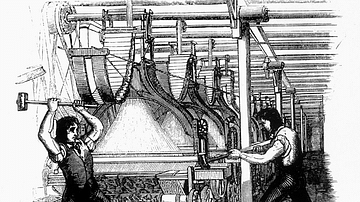
Image
Luddites Smashing Textile Machines
An illustration of Luddites smashing textile machines. The Luddite movement (from 1812) included skilled textile workers who had lost their jobs in the increasingly mechanized textile industry during the Industrial Revolution.
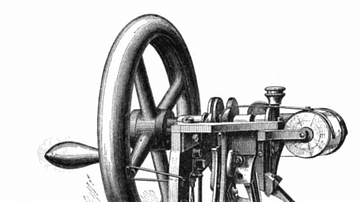
Image
Howe's Sewing Machine
An illustration of the lockstitch sewing machine, invented in 1844 by Elias Howe (1819-1867) in Cambridge, USA. The machine made much stronger fabrics than previously as the stitches did not unravel if the thread broke. The secret was the...

Image
Diagram of a Roberts Loom
A diagram showing a cross-section of a cast-iron loom powered by steam as invented by Richard Roberts (1789-1864) in 1822. The diagram illustrates the importance of clock-working engineering in textile mechanization. From R. Marsden's 1892...
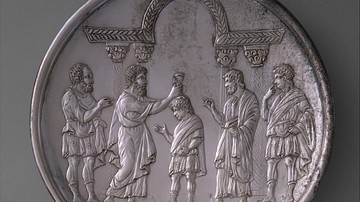
Image
David Anointed by Samuel
Samuel anointing David, Byzantine silver plate, made in Constantinople, 629-630.
Metropolitan Museum of Art, New York.
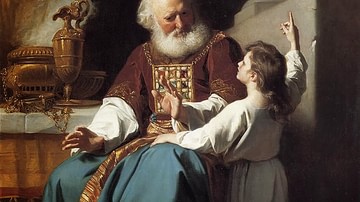
Image
Samuel Relating to Eli the Judgements of God upon Eli's House
Samuel Relating to Eli the Judgements of God upon Eli's House, oil on canvas by John Singleton Copley, 1780.
Wadsworth Atheneum Museum of Art, Hartford, Connecticut.

Image
Suleiman the Magnificent and the Ottoman Empire, c. 1566
Suleiman the Magnificent (also known as Süleyman, Suleyman I, or Suleiman the Lawgiver) was the tenth and longest-reigning sultan of the Ottoman Empire, ruling from 1520 to 1566. Over his 45-year reign, he governed a vast, diverse empire...
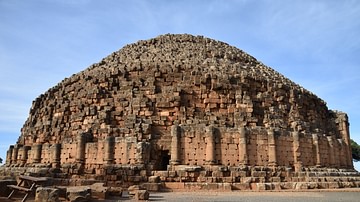
Image
Royal Mausoleum of Mauretania, Algeria
The Royal Mausoleum of Mauretania near Tipasa in Algeria is a funerary monument built in 3 BCE by Juba II of Numidia (c. 50 BCE- c. 25 CE) and his wife Cleopatra Selene II (40 BCE-c. 5 BCE). This tomb may have been their final resting place...
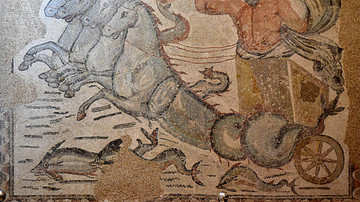
Image
Neptune in his Chariot Mosaic from Timgad
Roman mosaic depicting Neptune in his chariot. The god brandishes his trident as he stands in his chariot, which is drawn by four sea horses. From the East Baths of Thamugadi (Timgad), dated to the 3rd century CE.
Timgad Museum, Algeria.
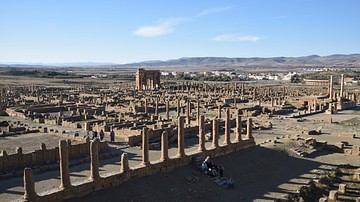
Image
Timgad, Algeria
Timgad (Roman Thamugadi) lies on the northern slopes of the Aurès Mountains in present-day Algeria. Emperor Trajan (r. 98-117 CE) founded the city as a military colony in 100 CE. With its square enclosure, orthogonal design, and two main...
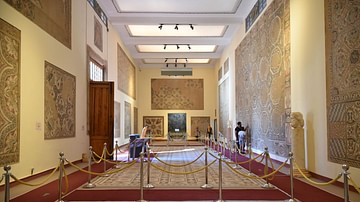
Image
Timgad Museum
The museum of Timgad in Algeria is located at the entrance of the site. It contains a particularly impressive collection of more than 80 mosaics and other important artefacts found at the site. Among the masterpieces are the mosaic of Neptune...